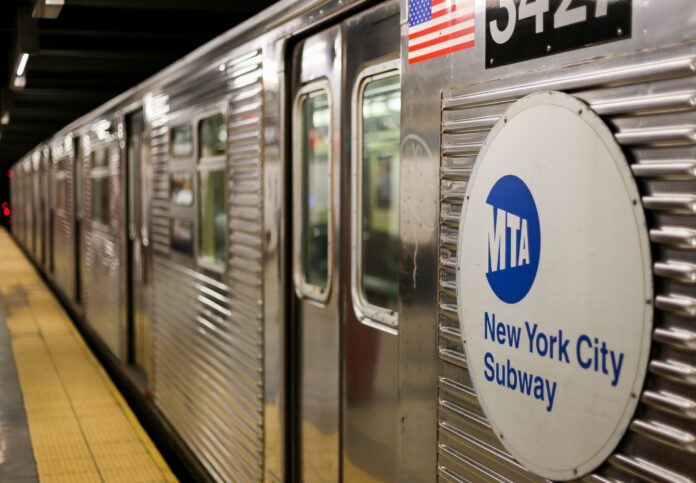Anyone who has traveled in a subway train has had the frustrating experience of losing their cellular and Wi-Fi connection. As the number of urban dwellers continues to rise along with the number of subway passengers, there is a need to fulfill the traveler’s expectation of seamless connectivity.
That’s one of the conclusions made by the Internet Connectivity in Underground Rail Systems global survey conducted by Advanced Public Transport. Quite simply, connectivity is a lifestyle issue.
The number of subway systems across the world is rising rapidly, with more than 45 new systems put into service since 2000. As of 2014, there were 148 cities around the world with subway systems, adding up to a total of 6,835 miles and 9,000 stations distributed throughout 540 lines. More than 150 million passengers travel in subways every day. That amounts to 45 billion trips per year.
The expansion of systems is only part of the story. The other significant change is the business culture of the transport sector. Increasingly, service providers are focusing on the complete passenger experience and looking for new ways to improve comfort and convenience. With the underlying goal of attracting more users, providers are seeking to meet the expectation of an uninterrupted and fast broadband connection wherever they are in a station or on a train.
Connectivity in stations
- Seventy-seven percent of subway systems responded that they provide either full or partial coverage either through a mobile network or Wi-Fi. Interestingly, 91% of subways in the Asia-Pacific region provide coverage while only 67% of systems in North America provide coverage. Europe comes in at 88%.
- When asked about the availability, 73% responded that they provide broadband availability in underground stations with 60% providing connectivity in all stations and 40% providing connectivity in only selected stations.
- Seventy percent of surveyed systems reported they plan to provide connectivity in stations and on trains. That’s compared to 25% for stations only and 5% for trains only.
- Europe and Asia were the first regions to deploy mobile and/or Wi-Fi connectivity in their underground stations as early as the mid-90s or early 2000s. North America followed in the middle of the last decade.
- Nearly 51% of stations provide Wi-Fi, 31% provide LTE, 43% provide 3G and 6% provide 2G service.
- The percentage of subway systems that plan to increase their efforts to expand broadband connectivity in existing stations in the next two years exceeds 80%. Additionally, the new stations designed from the ground up to be “digital stations” exceeds 90%.
Connectivity in trains
- Only 58% of systems offer Internet access to passengers during their ride on subway trains. Among these, 71% offer broadband connectivity on all their lines, while 29% offer it only on some lines. Reportedly, these are lower levels than for stations due to technical complexity and higher installation costs.
- As in the case of stations, Europe and Asia were also the first regions to provide on-board connectivity as early as the mid-90s or early 2000s. They were followed by North America in the middle of the last decade.
- More than 50% of systems plan to increase their efforts to expand broadband connectivity in trains in the coming two years.
- More than 50% of systems plan to increase their efforts to expand broadband connectivity in newly tunneled lines.
Wi-Fi connectivity
- Wi-Fi is popular in stations because it can be installed quickly and easily. However, it is more difficult to install Wi-Fi in trains because of the relatively low power signals. This requires base stations to be installed at intervals of 328 to 547 yards.
- Ninety percent of systems with Wi-Fi capabilities are offering the service free of charge, and this is a trend that is expected to continue into the future.
- Most stations restrict access. Bandwidth restrictions range between 512 kilobits per second and 1 megabit per second. Time restrictions range between 15 and 60 minutes per day.
Business model and telecom providers
- The dominant model for deployment of mobile connectivity places the responsibility for investment and installation on telecom investors. This model is expected to remain stable over the next few years.
- The Wi-Fi model is different. Implementation is quickly driven by local stakeholders such as the subway company or the local government.
The future of subway connectivity
Having access to Internet connectivity while using the subway has become a key lifestyle factor when assessing the quality of life in cities. One thing is for sure, based on the survey results, the effort to expand broadband connectivity in subway stations and trains will continue in the coming years.
Adlane Fellah, is managing director of WiFi360. Prior to founding the company, the only content marketing agency serving the Wi-Fi industry, Fellah was the founder of Maravedis, a leading analyst firm in the broadband wireless industry. He has authored various landmark reports on LTE, 4G, WiMAX, broadband wireless and voice over IP. He is regularly asked to speak at leading wireless events and to contribute to various influential portals and magazines such as Telephony Magazine, 4G & WiMAX Trends, Fierce Wireless and WiMAX.com, to name a few. Fellah has been a member of the program advisory board for the 4G World conference since 2004 and an active member of the World Communications Association International and the European Broadband Wireless Association. Prior to founding Maravedis, Fellah held various positions at Harris Corp. in charge of market intelligence and business development. Fellah is passionate about best practices of marketing and technology.
Editor’s Note: Welcome to Analyst Angle. We’ve collected a group of the industry’s leading analysts to give their outlook on the hot topics in the wireless industry.

